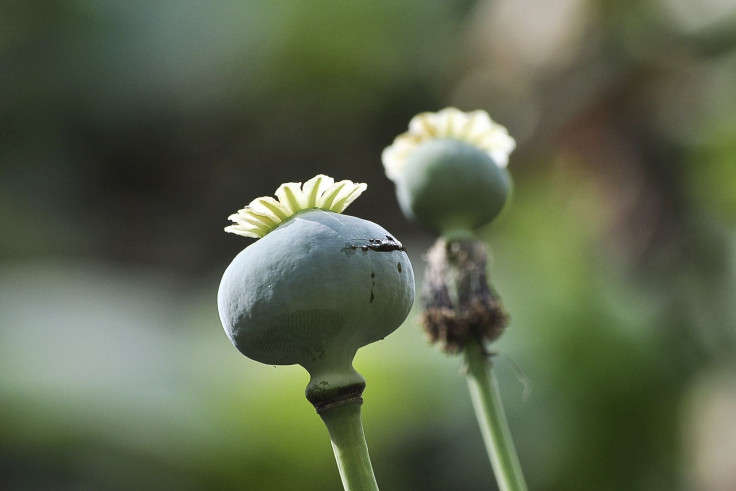Home-Brewed Opiates Made Possible By Genetically Engineered Yeast

A team of scientists from Concordia University in Montreal, Canada, and the University of California, Berkeley, have devised a way to synthetically create the painkillers morphine and codeine, which are naturally produced in opium poppy plants. Although the discovery marks a breakthrough in the production of several opiates, antibiotics and cancer treatments, it also opens the door for drugs like heroin -- derived from morphine -- to be produced in “home-breweries.”
“Moonshiners and home-brewers have long used yeast to convert sugar into alcohol. New research shows that those methods could also be adapted for something with more significant ramifications,” the researchers said, in a statement released Monday.
The chain of chemical reactions that eventually leads to the creation of opiates in the plant consists of several steps. These include the conversion of glucose to a compound known as reticuline, which is then converted to codeine or morphine. Although scientists have, in the past, succeeded in reproducing the second half of the chain, the initial conversion of glucose to reticuline had not been achieved until now.
According to the findings of a study published in the journal Nature Chemical Biology, the creation of an easy-to-brew yeast strain that can link together the entire chemical chain is now possible with genetic engineering.
“Getting to reticuline is critical for the process to be economically viable because from there, most of the molecular steps that produce codeine and morphine have been identified in yeast,” Vincent Martin, a professor of microbial genomics and engineering at Concordia, said, in the statement. “We can explore many different paths to other potential drugs, not just opiates.”
However, the scientists stopped short of attempting the final step that leads to the creation of opiates.
“We need a common regulatory effort from governments, law officials and the scientific community to prevent misuse and allow the research to continue,” John Dueber from UC Berkeley, who led one of the research teams, said, in the statement. “The field is moving surprisingly fast, and we need to be out in front so that we can mitigate the potential for abuse.”
Currently, it is believed that over 16 million people around the world use opiates and opioids illegally, either through the consumption of prescription drugs like oxycodone and hydrocodone, or through heroin synthesized from illegally cultivated opium poppies in countries such as Afghanistan, Myanmar, Laos and Mexico. Worldwide, an estimated 69,000 people die from opioid overdose each year.
Despite its potential for misuse, however, the technology’s benefits are immense. The research could ultimately lead to cheaper, less addictive, safer and more effective painkillers. It can also be used to create new compounds with therapeutic effects that are not naturally produced in quantities large enough to meet demand.
© Copyright IBTimes 2024. All rights reserved.












